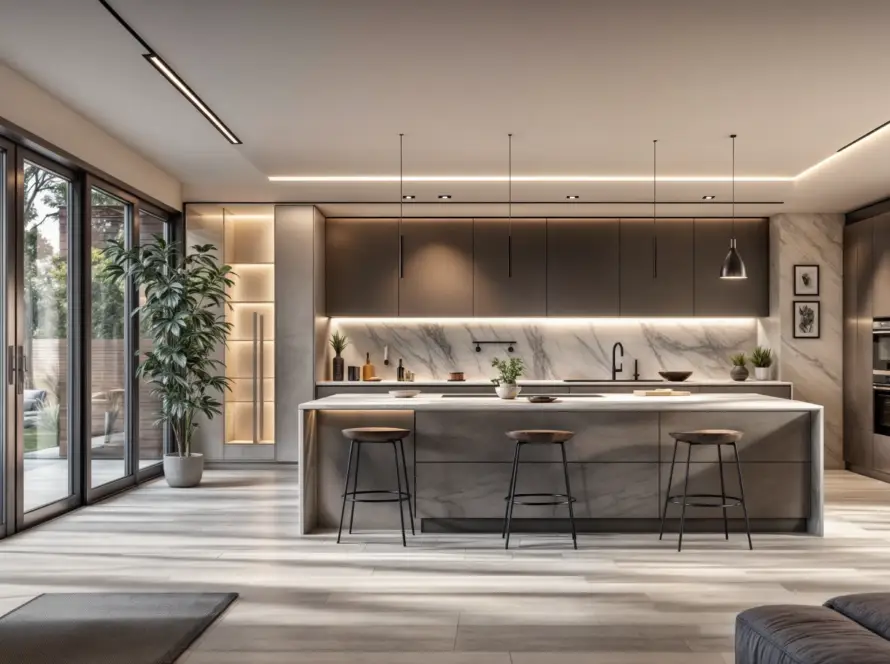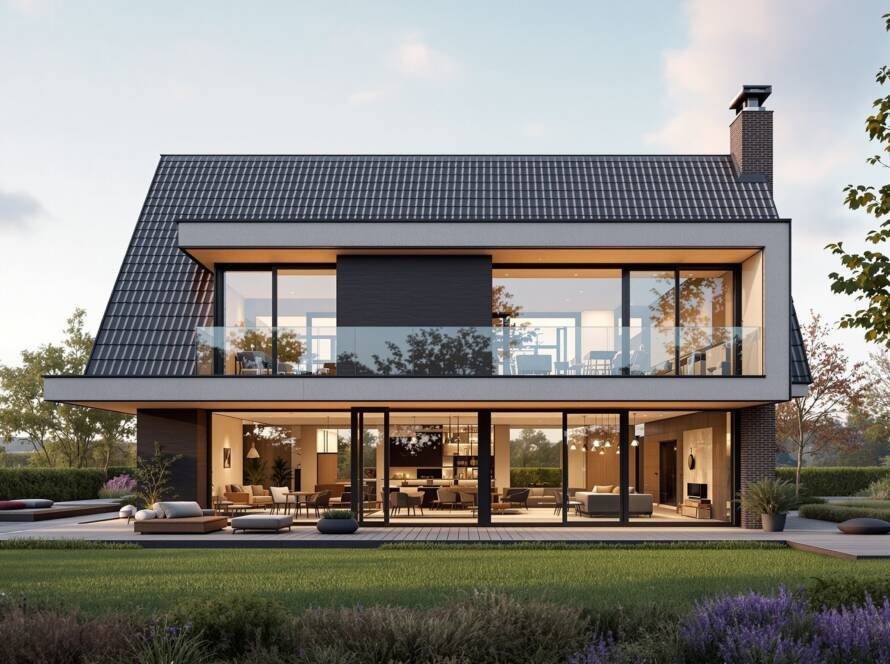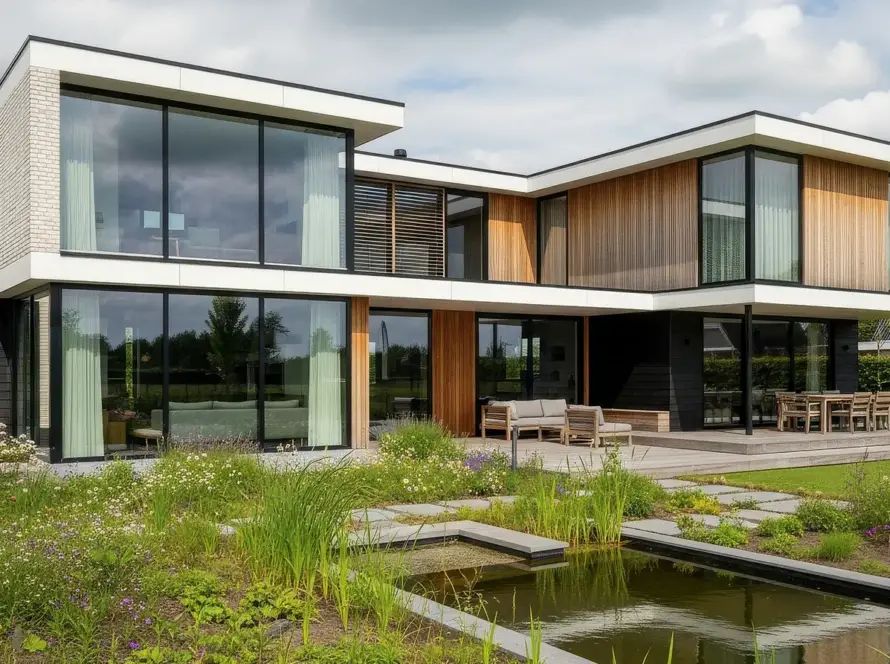In the bustling urban landscapes of the Netherlands, where historic charm often meets contemporary living, the pursuit of tranquility within our homes has become increasingly paramount. The persistent hum of traffic, the chatter of passersby, and the occasional late-night revelry can significantly detract from the peace and comfort we seek. This is where the strategic implementation of acoustic insulation, particularly through soundproof windows and doors, becomes not just a luxury, but a necessity for enhancing the quality of Dutch urban living. This extensive guide will delve deep into the world of sound insulation, explaining its importance, exploring key concepts, and providing practical insights tailored specifically for homeowners in the Netherlands.
Basic Concepts of Acoustic Insulation
Before we explore the specifics of soundproof windows and doors, it’s crucial to understand the fundamental principles of acoustics and how sound travels. Armed with this knowledge, you can make informed decisions about your home’s sound insulation needs.
- Sound Transmission: Sound travels as waves through a medium, whether it’s air, solid materials, or liquids. When sound waves encounter a barrier, they can be absorbed, reflected, or transmitted. Effective acoustic insulation aims to minimize the transmission of unwanted sound.
- Decibels (dB): Decibels are the unit used to measure the intensity or loudness of sound. A higher decibel level indicates a louder sound. For reference, normal conversation is typically around 60 dB, while a busy street can be upwards of 80 dB.
- Sound Reduction Index (Rw): This is a single-number rating used to quantify the airborne sound insulation of a building element, such as a window or door. It represents the decibel reduction achieved by the element across a range of frequencies. A higher Rw value indicates better sound insulation.
- Sound Absorption vs. Sound Blocking: It’s important to differentiate between sound absorption and sound blocking. Sound absorption materials convert sound energy into heat, reducing echoes and reverberation within a space. Sound blocking, on the other hand, aims to prevent sound from passing through a barrier. Soundproof windows and doors primarily focus on sound blocking.
- Flanking Transmission: This refers to sound transmission that occurs through paths other than the primary barrier. For example, sound can bypass a soundproof window by traveling through gaps around the frame or through adjacent walls. Addressing flanking transmission is crucial for achieving optimal sound insulation.
The Urgency of Acoustic Insulation in the Netherlands
The Netherlands, with its high population density and compact urban planning, naturally presents unique challenges when it comes to noise pollution. From bustling city centers to close-knit residential areas, noise from various sources can easily infiltrate homes. Investing in soundproof solutions offers numerous benefits for Dutch residents:
- Enhanced Comfort and Well-being: A quiet home environment significantly reduces stress levels, improves sleep quality, and contributes to overall well-being. It creates a sanctuary where you can relax, work, and spend quality time with family without constant disturbances.
- Increased Property Value: Homes with superior sound insulation are often more attractive to potential buyers, commanding higher property values. It’s a tangible improvement that adds long-term value to your investment.
- Improved Concentration and Productivity: For those working from home or children studying, a quiet space is essential for focus and productivity. Sound insulation minimizes distractions, allowing for better concentration.
- Privacy: Soundproof elements also contribute to greater privacy, preventing your conversations and activities from being easily heard by neighbors or passersby.
- Compliance with Regulations: While not always strictly enforced for existing homes, new construction and major renovations in the Netherlands often have specific acoustic requirements. Understanding these can help you plan effectively.
Soundproof Windows: Your First Line of Defense Against Noise
Windows are often the weakest link in a building’s sound insulation, allowing a significant amount of external noise to penetrate. Upgrading to soundproof windows is one of the most effective ways to reduce noise pollution in your home.
Understanding the Components of Soundproof Windows
The effectiveness of a soundproof window largely depends on its construction and the materials used. Here are the key components that contribute to superior acoustic performance:
- Thicker Glass Panes: Standard double-glazing uses two panes of glass of the same thickness. Soundproof windows often incorporate significantly thicker glass panes, or even triple glazing, to increase the mass and thus the sound blocking capability.
- Laminated Glass: This type of glass consists of two or more panes bonded together with a transparent plastic interlayer (PVB). The interlayer acts as a damping element, absorbing sound vibrations and preventing them from passing through the glass. This is a highly effective solution for acoustic insulation.
- Asymmetric Glazing: Using glass panes of different thicknesses (e.g., 6mm outer pane, 4mm inner pane) creates different resonant frequencies, disrupting the sound waves and improving overall sound insulation.
- Wider Air/Gas Cavity: The space between the glass panes in double or triple glazing can be filled with an inert gas like Argon or Krypton. While primarily for thermal insulation, a wider cavity (e.g., 16-20mm) can also contribute to better acoustic performance by creating a larger air gap for sound waves to traverse. However, excessive widening can sometimes lead to reduced sound insulation at certain frequencies.
- Acoustic Spacers: Traditional aluminum spacers between glass panes can transmit sound. Acoustic spacers, often made of a composite material, help to break the thermal and acoustic bridge between the panes, further enhancing performance.
- Heavy-Duty Frames: The window frame itself plays a crucial role. Solid, well-sealed frames made from materials like uPVC (kunststof), aluminum, or hardwood are essential. They should be robust and designed to minimize vibrations.
- Superior Seals and Gaskets: Air leaks are sound leaks. High-quality, multi-chambered seals and gaskets around the perimeter of the window and between the opening sashes are critical for a tight seal, preventing sound from flanking the glass.
Rw Values for Soundproof Windows
When selecting soundproof windows, pay close attention to their Rw (Sound Reduction Index) value. Here’s a general guideline:
| Rw Value (dB) | Typical Noise Reduction | Suitable Application in the Netherlands |
|---|---|---|
| 25-30 | Basic noise reduction (e.g., quiet residential areas) | Minor street noise, distant sounds |
| 30-35 | Moderate noise reduction (e.g., moderate traffic, distant urban sounds) | Average urban street, light traffic |
| 35-40 | Good noise reduction (e.g., busy streets, moderate urban noise) | Busy city streets, commercial areas |
| 40-45+ | Excellent noise reduction (e.g., heavy traffic, industrial noise, aircraft noise) | Major highways, airports, very noisy urban centers |
For most urban homes in the Netherlands, an Rw value of 35-40 dB for windows is often sufficient to achieve a noticeable and comfortable reduction in external noise. For highly exposed locations, consider options exceeding 40 dB.
Acoustic Doors: Sealing the Entry Points of Sound
Just like windows, doors can be significant culprits in sound transmission. Whether it’s the front door, internal doors to a noisy street, or even doors within the home leading to a busy utility room, upgrading to acoustic doors can dramatically improve sound insulation.
Key Features of Soundproof Doors
Achieving effective sound insulation in doors requires a combination of mass, seals, and proper installation:
- Solid Core Construction: Unlike hollow-core doors, soundproof doors feature a solid core, typically made from high-density materials like particleboard, MDF, or even specialized acoustic materials. This increased mass is crucial for blocking sound.
- Increased Thickness: Acoustic doors are generally thicker than standard doors, often ranging from 44mm to 54mm or more. The additional thickness contributes to greater mass and rigidity.
- Perimeter Seals: These are flexible seals installed around the edges of the door frame. When the door is closed, they compress to create an airtight seal, preventing sound from escaping or entering through the gaps.
- Automatic Drop Seals (Door Bottom Seals): Many acoustic doors feature an automatic drop seal that lowers to seal the gap between the bottom of the door and the floor when the door is closed. This is vital for preventing sound leakage.
- Heavy-Duty Frames: Just like with windows, a robust and well-installed door frame that can support the increased weight of an acoustic door and accommodate the sealing mechanisms is essential.
- Acoustic Thresholds: These specially designed thresholds work in conjunction with door bottom seals to create a complete sound barrier at the base of the door.
Rw Values for Soundproof Doors
The Rw values for acoustic doors vary based on their construction and intended use:
| Rw Value (dB) | Typical Noise Reduction | Suitable Application in the Netherlands |
|---|---|---|
| 28-32 | Basic internal sound separation (e.g., office, bathroom) | Standard internal doors, light noise reduction |
| 32-38 | Moderate sound separation (e.g., residential bedrooms, connecting rooms) | External doors to quiet areas, internal bedroom doors |
| 38-42+ | High sound separation (e.g., busy offices, entrance doors to noisy environments) | Main entrance doors in urban areas, doors to communal spaces |
For entrance doors facing a busy street or communal hallway in the Netherlands, an Rw value of 38 dB or higher is highly recommended for significant noise reduction.
Integration and Installation: The Unsung Heroes of Acoustic Performance
Even the highest-rated soundproof windows and doors will perform poorly if not installed correctly. Proper integration with the existing structure and meticulous installation are paramount.
Considerations for Seamless Integration
- Wall Construction: The acoustic performance of your walls impacts the overall sound insulation. If you invest in high-performance windows and doors but have thin, poorly insulated walls, sound can still flank through. Consider improving wall insulation in conjunction with window/door upgrades for optimal results.
- Cavity Barriers: In multi-story buildings, fire and acoustic cavity barriers in floors and ceilings can prevent sound from traveling between floors or adjacent rooms. Ensure these are properly installed or considered during major renovations.
- Ventilation: Installing airtight windows and doors will significantly reduce natural ventilation. It is crucial to implement alternative ventilation solutions such as trickle vents (if they don’t compromise acoustic performance too much) or mechanical ventilation systems (WTW-units) to maintain healthy indoor air quality.
Professional Installation: Non-Negotiable for Acoustic Success
Do not underestimate the importance of professional installation for soundproof windows and doors. This is not a DIY project.
- Precise Measurement: Exact measurements are crucial to ensure a snug fit, minimizing gaps that can leak sound.
- Proper Sealing: The installer must meticulously seal all gaps around the frame with acoustic sealant and expanding foam designed for sound insulation. Even a small gap can compromise the entire system’s performance.
- Secure Fixing: Windows and doors must be securely fixed to the building structure to prevent vibrations and ensure stability.
- Adjustments: Acoustic doors, in particular, require precise adjustment of hinges and seals to ensure they close tightly and the perimeter seals engage effectively.
- Expertise with Materials: Professional installers are knowledgeable about the specific characteristics of acoustic materials and how to handle them to maximize their effectiveness.
Trends in Construction: Acoustic Excellence for Modern Dutch Homes
The construction industry in the Netherlands is increasingly recognizing the importance of acoustic comfort, driven by both resident demand and evolving building standards.
- Smart Home Integration: Future trends include integration of noise monitoring systems that can inform homeowners about external noise levels, potentially even dynamically adjusting ventilation or other systems.
- Sustainable Acoustics: Growing emphasis on using eco-friendly and sustainably sourced materials for acoustic solutions, aligning with the Netherlands’ strong environmental focus.
- Modular Building with Acoustic Considerations: The rise of modular and prefabricated construction in the Netherlands is incorporating acoustic planning from the earliest design stages, ensuring high levels of sound insulation in pre-built modules.
- Transparent Acoustic Solutions: Development of acoustic glass that maintains high transparency while offering superior sound reduction, allowing for large, noise-resistant glass facades.
- Noise Mapping and Predictive Modelling: Advanced tools are being used to predict noise levels for new developments, allowing architects and builders to design optimized acoustic solutions from the outset.
Practical Tips for Dutch Homeowners Seeking Acoustic Improvement
When embarking on your journey to a quieter home, consider these practical recommendations:
- Conduct a Noise Assessment: Before investing, take time to identify the primary sources of noise in your home. Is it traffic? Loud neighbors? Distant trains? This will help you prioritize which areas of your home need the most attention.
- Consult with Specialists: Engage with reputable window and door manufacturers and installers in the Netherlands who specialize in acoustic solutions. They can provide tailored advice and assess your specific needs. Look for companies with demonstrable experience and certified products.
- Request Rw Ratings: Always ask for the Rw (Sound Reduction Index) ratings of the windows and doors you are considering. Do not rely solely on vague “soundproof” claims.
- Focus on the Weakest Links: If your budget is limited, prioritize upgrading the windows and doors in the rooms most affected by noise or where quiet is most desired (e.g., bedrooms, home office).
- Consider Phased Renovation: If a full overhaul is not immediately feasible, consider a phased approach. Start with the most impactful upgrades and gradually extend them as budget allows.
- Don’t Forget Ventilation: With improved airtightness from soundproof windows and doors, ensure you have an adequate ventilation strategy to maintain healthy indoor air quality. Consult with your installer or an HVAC specialist.
- Check Guarantees and Certifications: Ensure that the products and installation come with comprehensive guarantees and relevant certifications (e.g., KOMO).
- Explore Subsidies (if available): Periodically check municipal or national government websites in the Netherlands for any potential subsidies or grants related to energy efficiency and environmental improvements, as some acoustic upgrades might qualify.
Conclusion
In the vibrant urban tapestry of the Netherlands, a quiet and comfortable home is not just a luxury but a crucial component of modern living. Investing in high-quality soundproof windows and doors represents a significant step towards achieving this tranquility. By understanding the core principles of acoustic insulation, appreciating the specific features of sound-reducing products, and ensuring professional installation, Dutch homeowners can effectively transform their living spaces into peaceful sanctuaries, free from the incessant symphony of urban noise. Embrace the quiet and enhance your quality of life – it’s an investment in your well-being and the value of your Dutch home.




